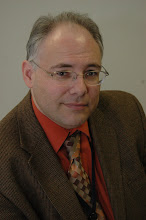This is will be short because of the late hour, but if you are interested in a good DVD documentary that shows the rise and fall of one the great movie studios, and how it worked during the heyday of Hollywood, this two-disc, six-hour set released in late January is the ticket. Originally shown on TNT about 15 years ago, it has not been seen much since except for a rare airing on Turner Classic Movies.
This three-part series details the rise and fall of MGM, where the son of a junk dealer, Louie B. Meyer, and a well-educated, sickly young boy genius, Irving Thalberg, combined forces to create the greatest movie studio in Hollywood. It reveals how their different personalities at various times propelled the creation of literary classics transferred to the screen (Thalberg) and family classics, such as the Andy Hardy series (Meyer), as well as how Meyer discovered stars like Garbo and Garson.
The series is rich in clips and stories, interviewing just about every available survivor of the studio at the time, from studio executives to unbilled dancers, and using other available footage as well. Highlights include what the Marx Brothers did when Thalberg had left them in his office once too often for story conferences (they stripped naked and roasted potatoes in his office fireplace) to Van Johnson getting tearful about a wartime scene Mickey Rooney once performed reading a telegram from Johnson's character. Many of the participants have since passed away, so it is a real oral history lesson. (Some of the outtakes have appeared on TCM over the years between movie airings.)
There are no extras, unfortunately, but the storytelling and a breathtaking set design for narrator Patrick Stewart to walk around in at times makes up for it. If you like a good overview of what the old studio system was like -- as well as how it floundered with the advent of television -- this one is for you. They'll never make movies like this again, so just sit back and be amazed how a virtual city of 5,000 people in Culver City worked every day to make classics week after week after week.
Saturday, January 31, 2009
DVD recommendation: MGM: When the Lion Roars
Subscribe to:
Post Comments (Atom)

No comments:
Post a Comment